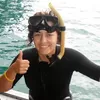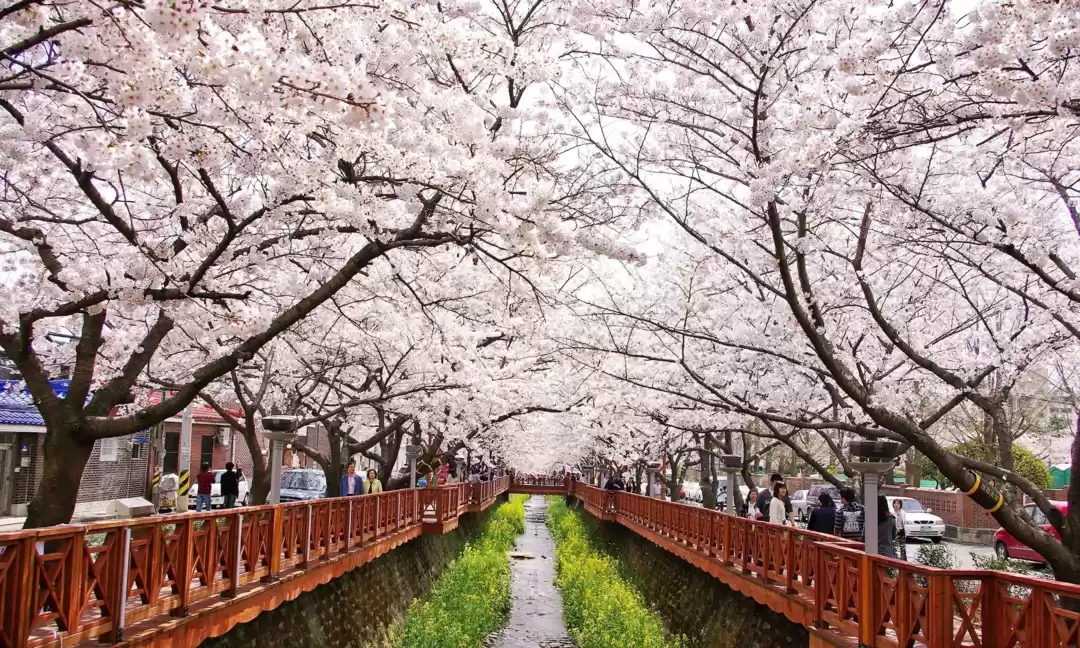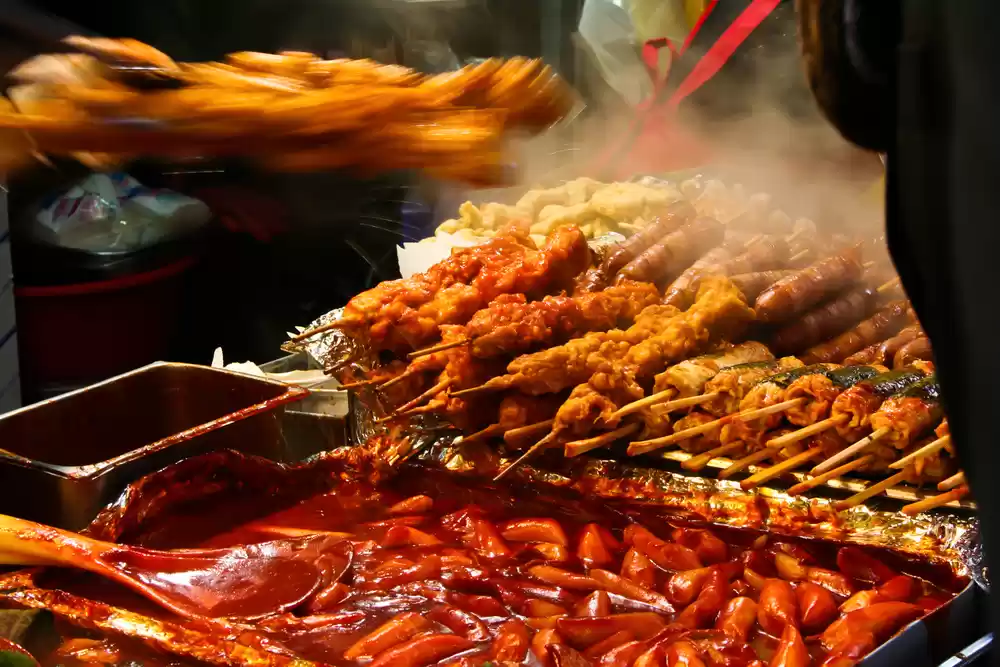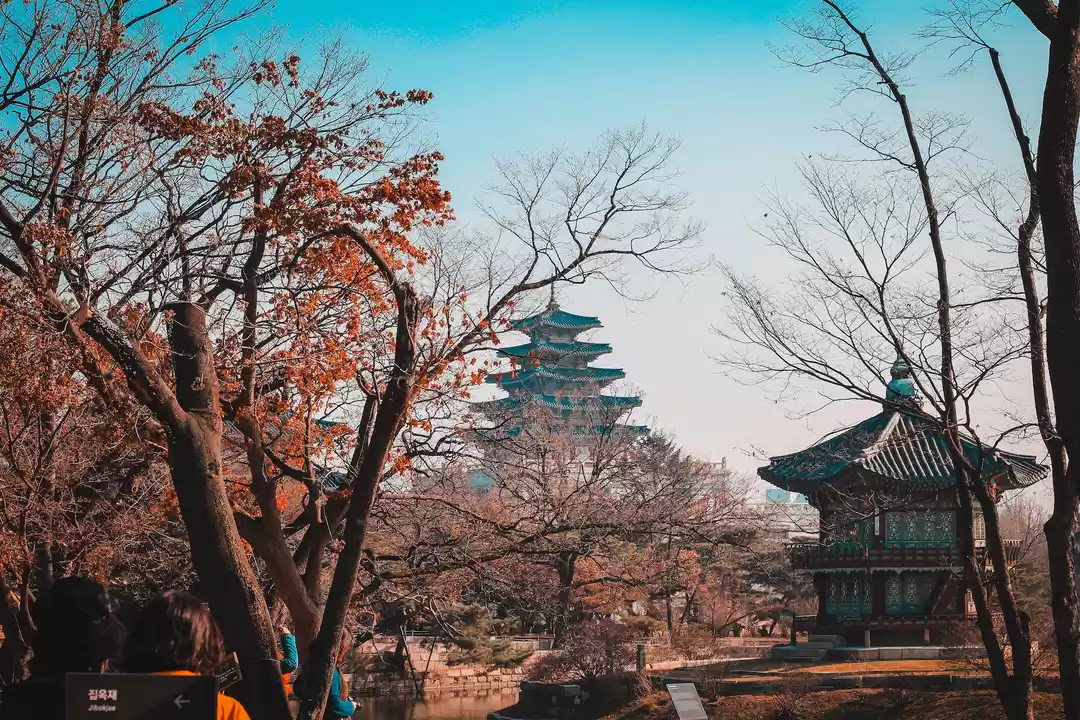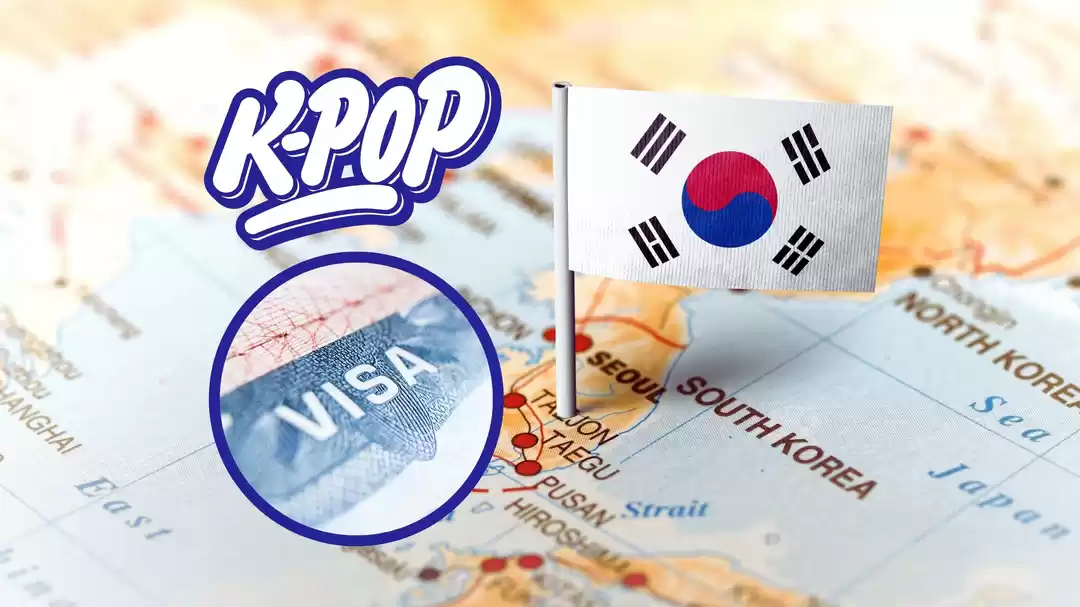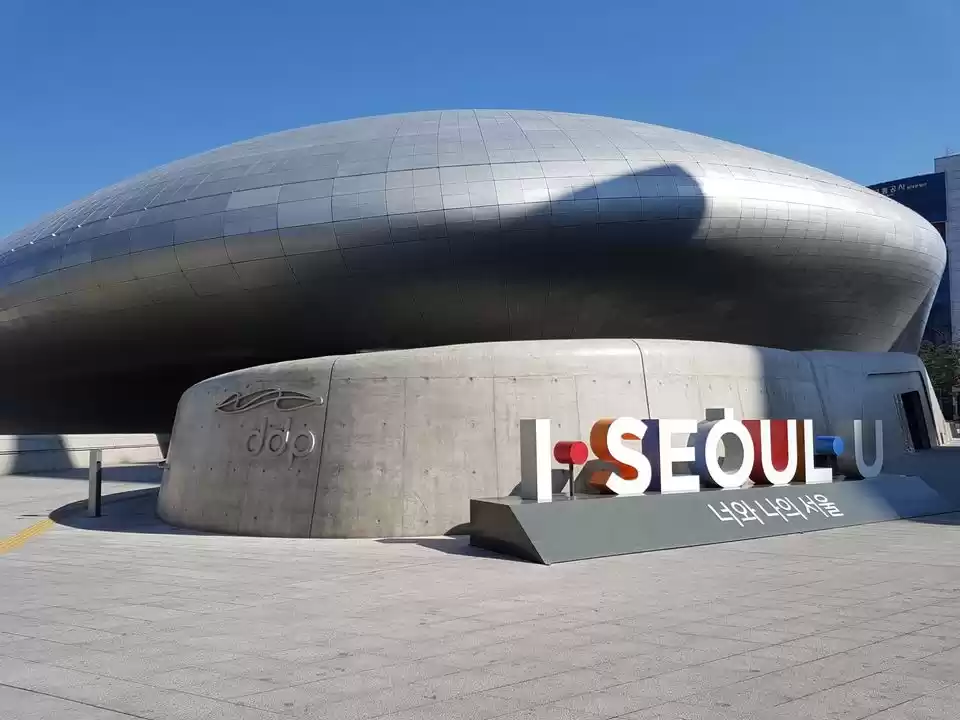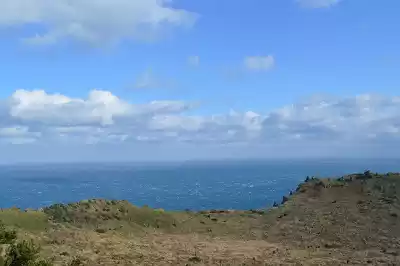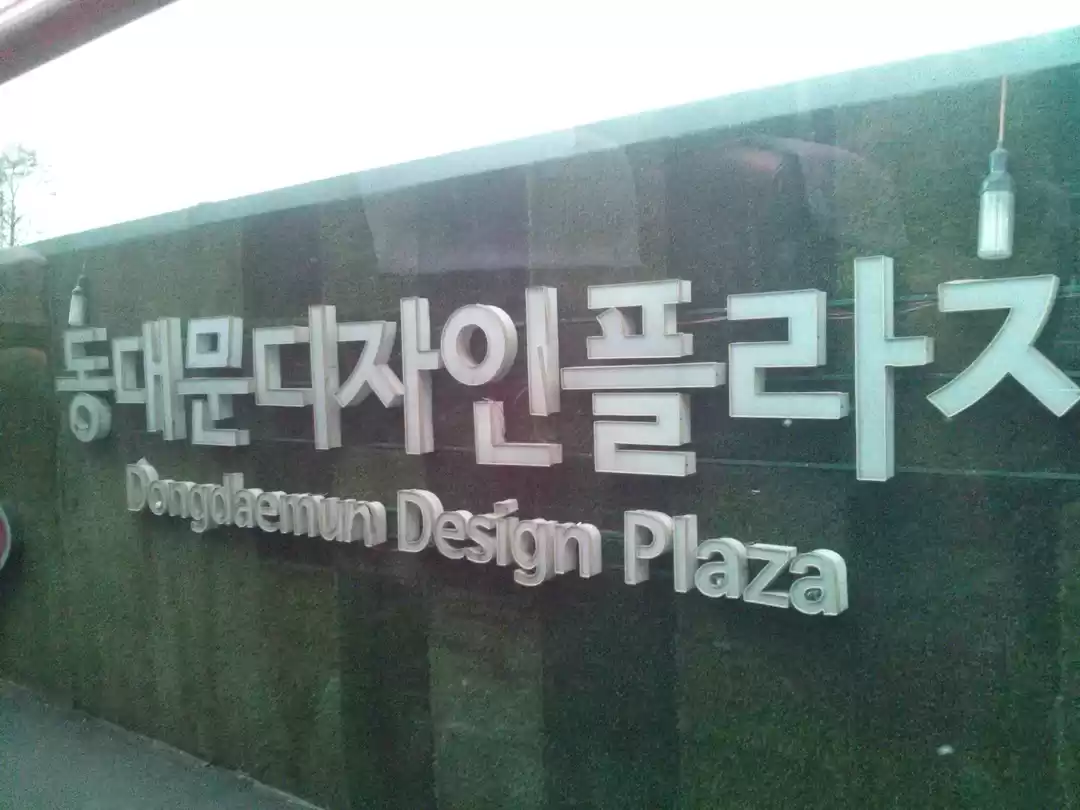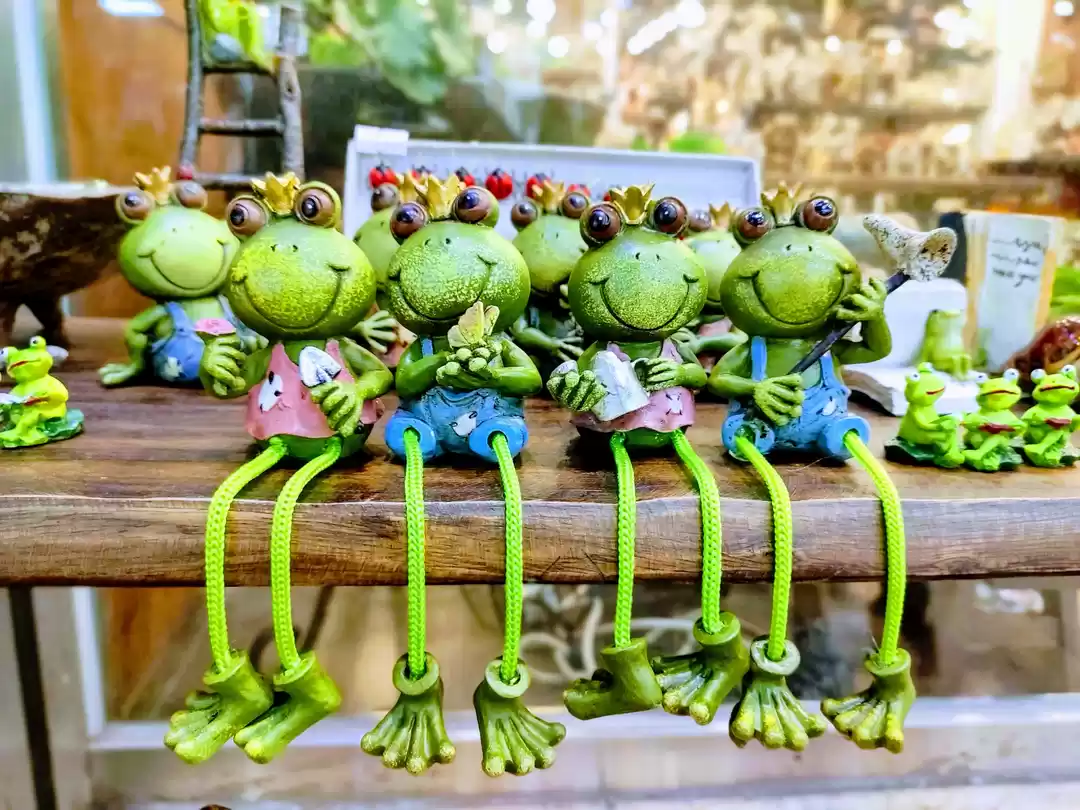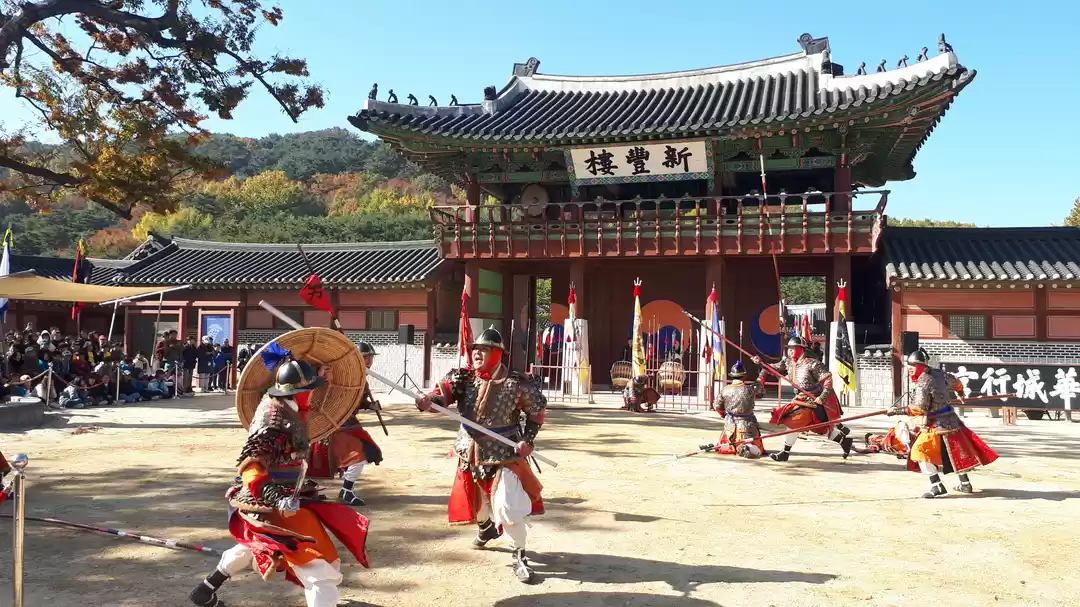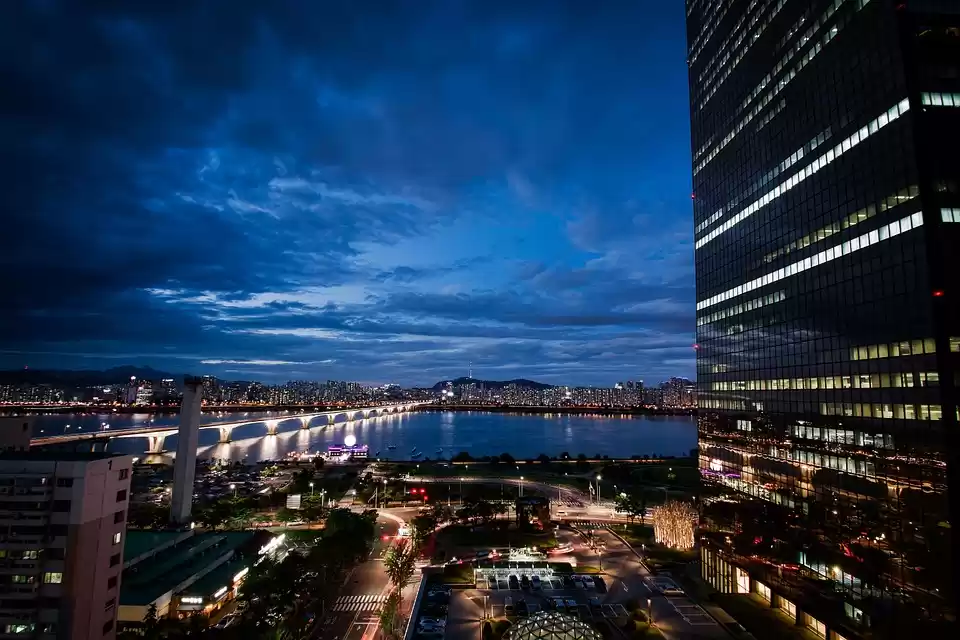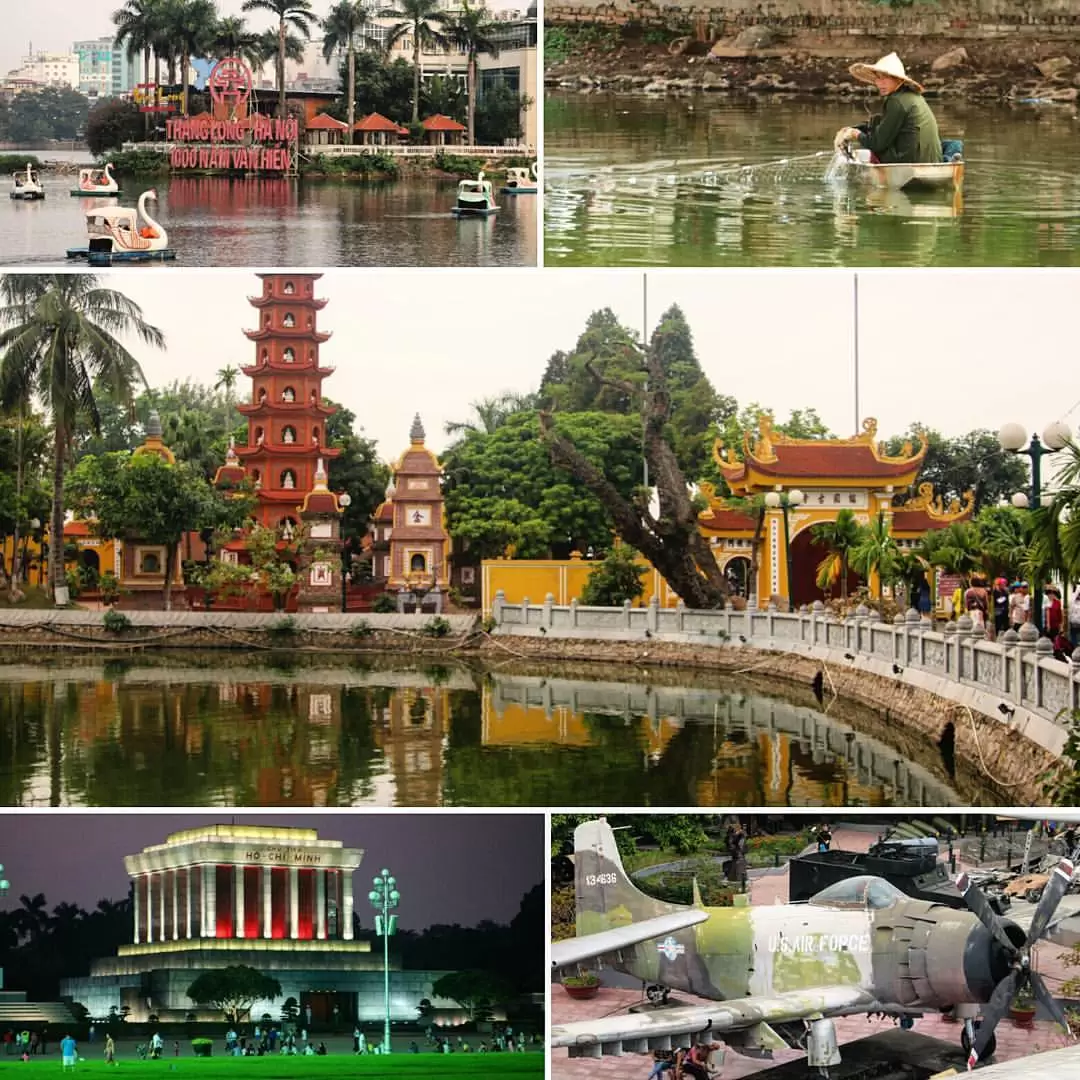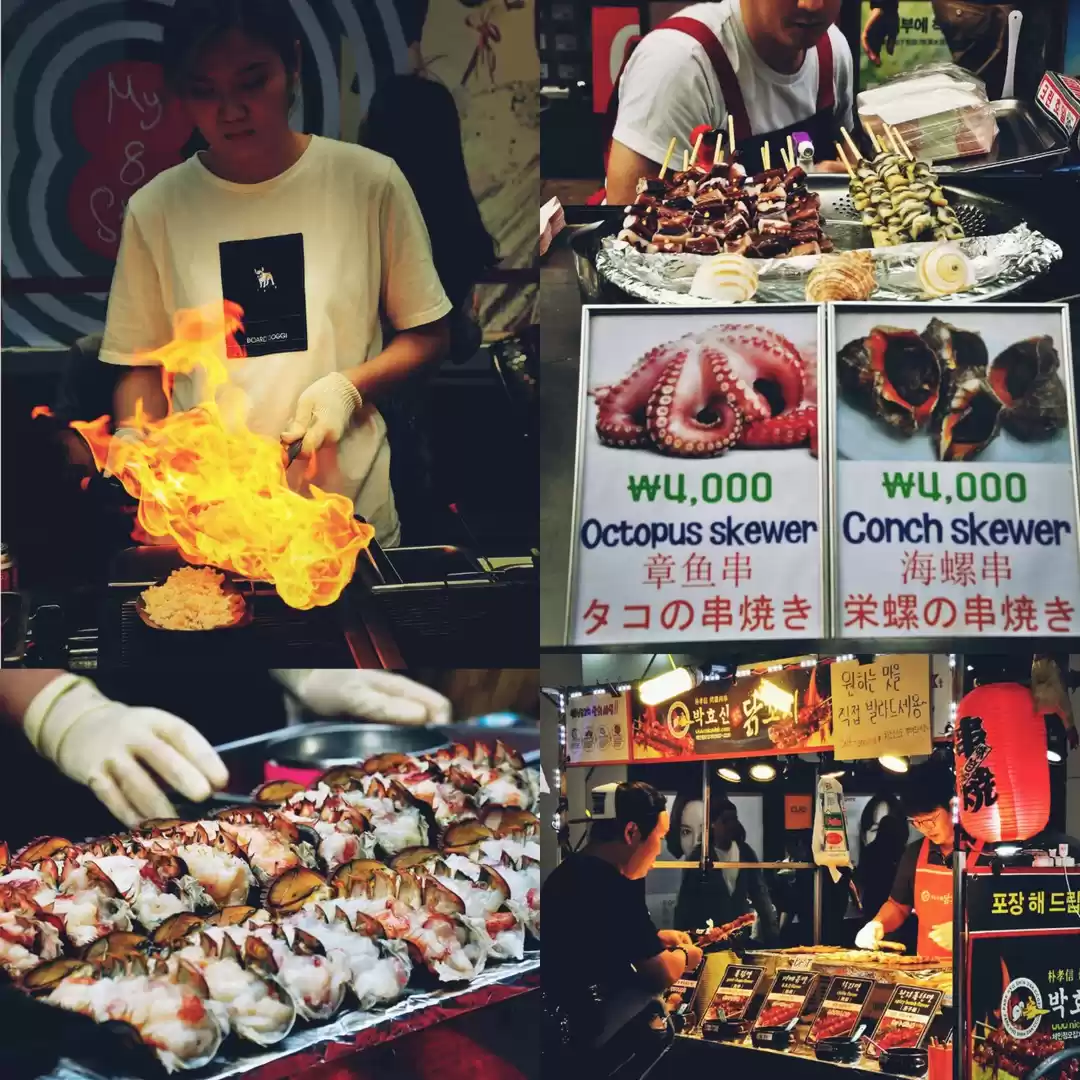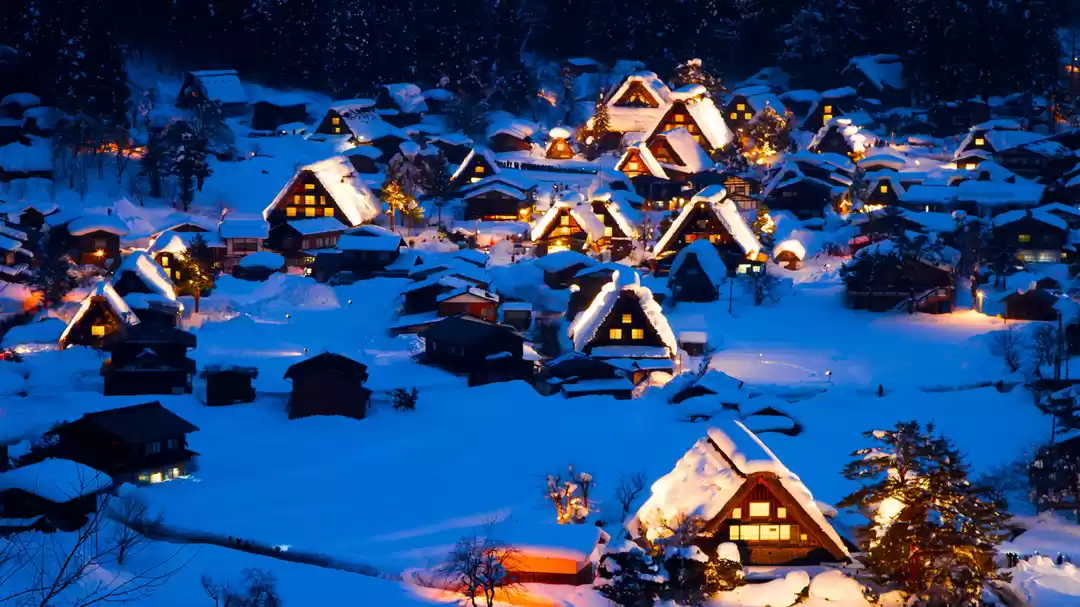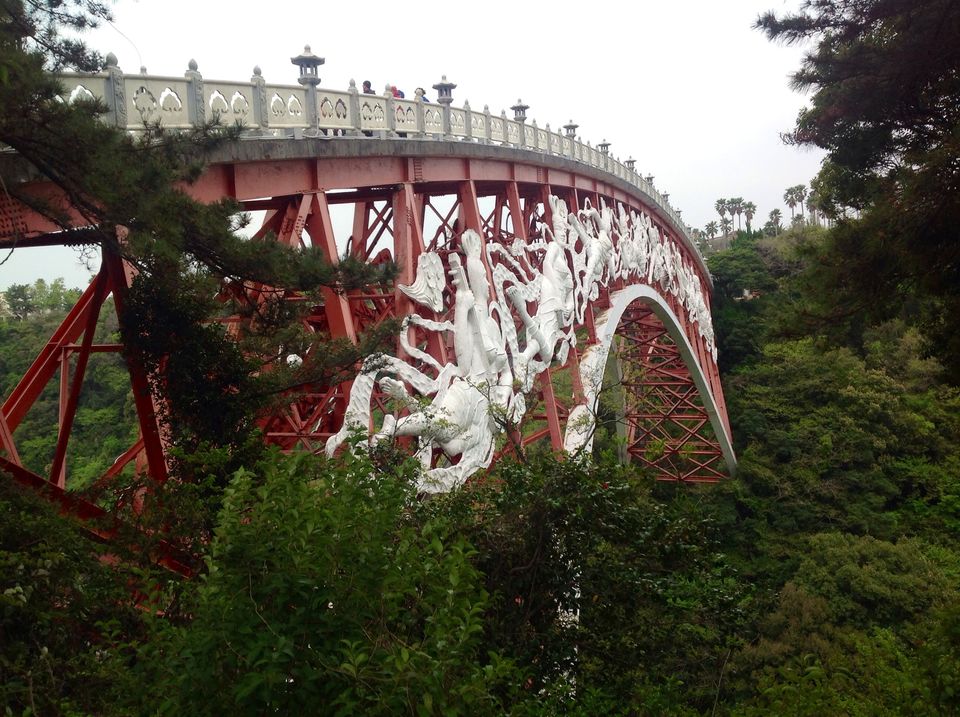
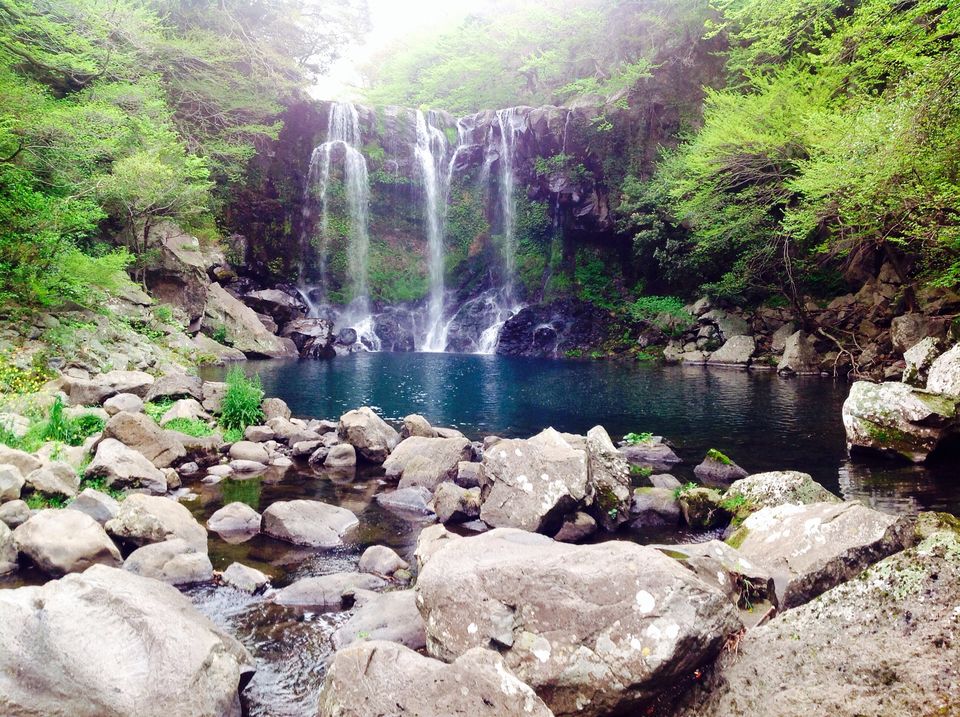


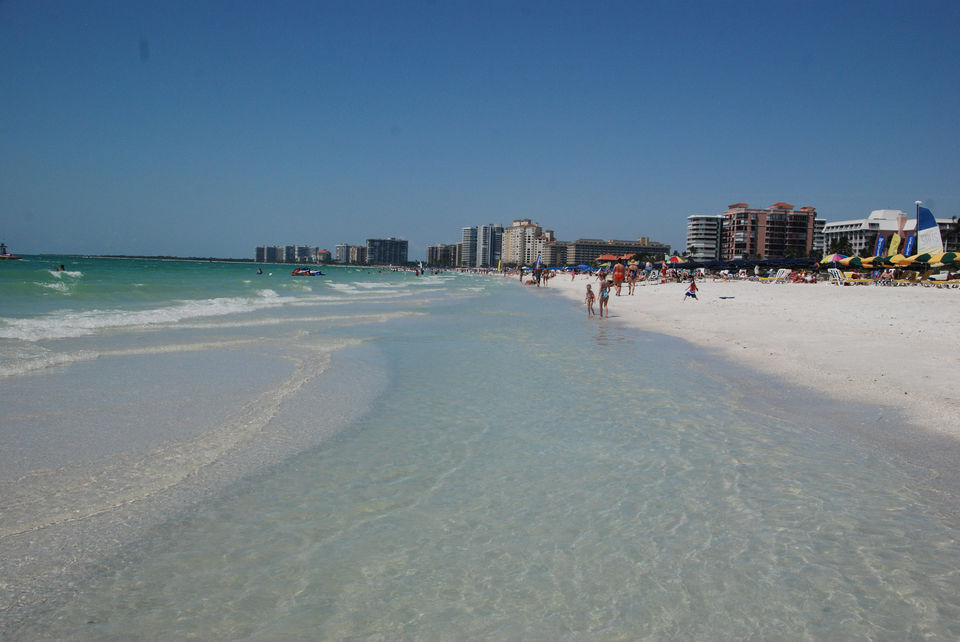

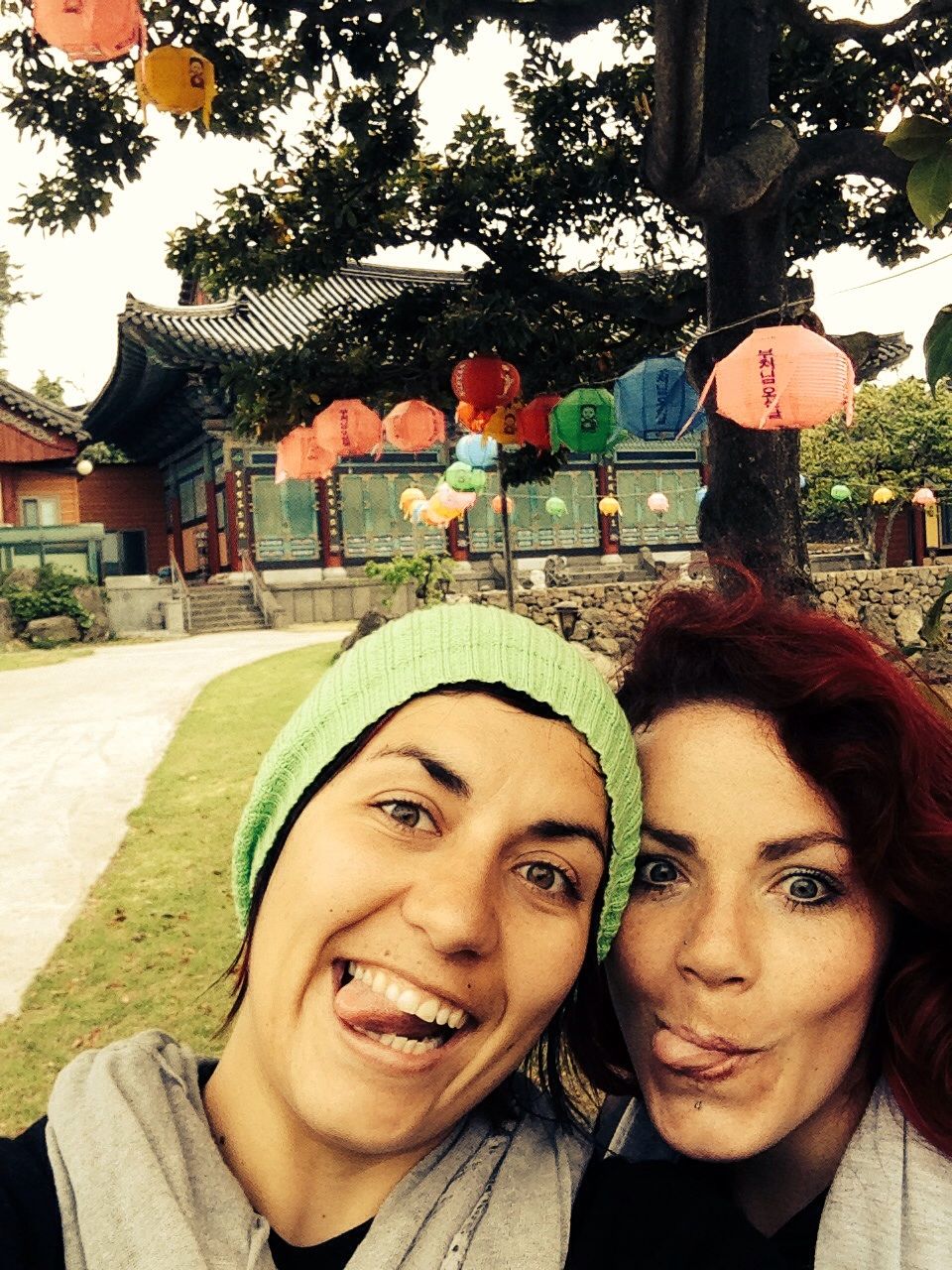
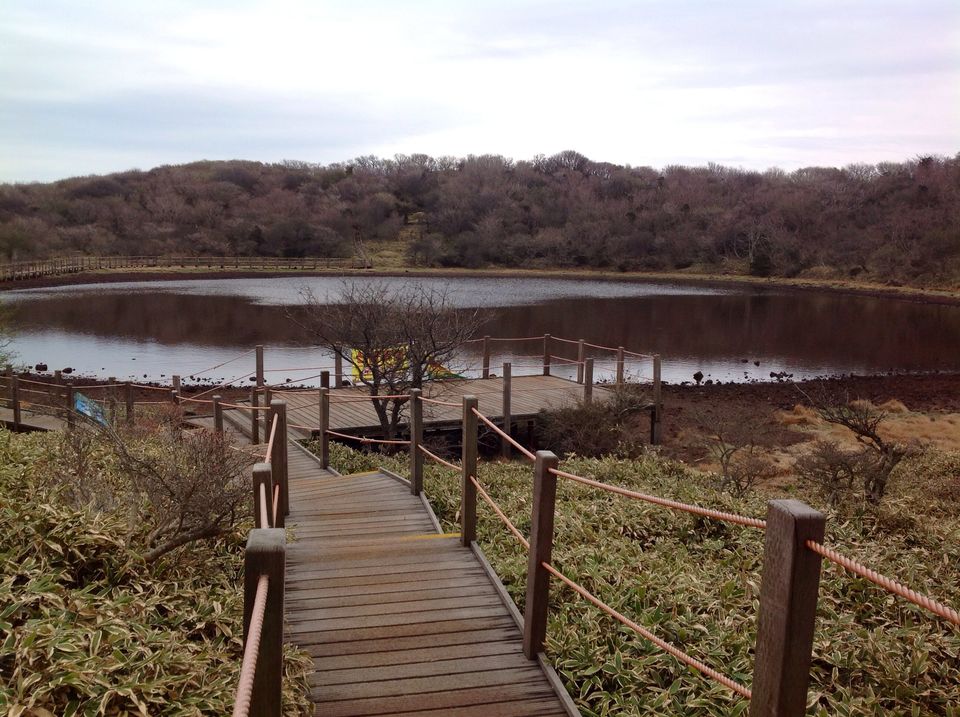



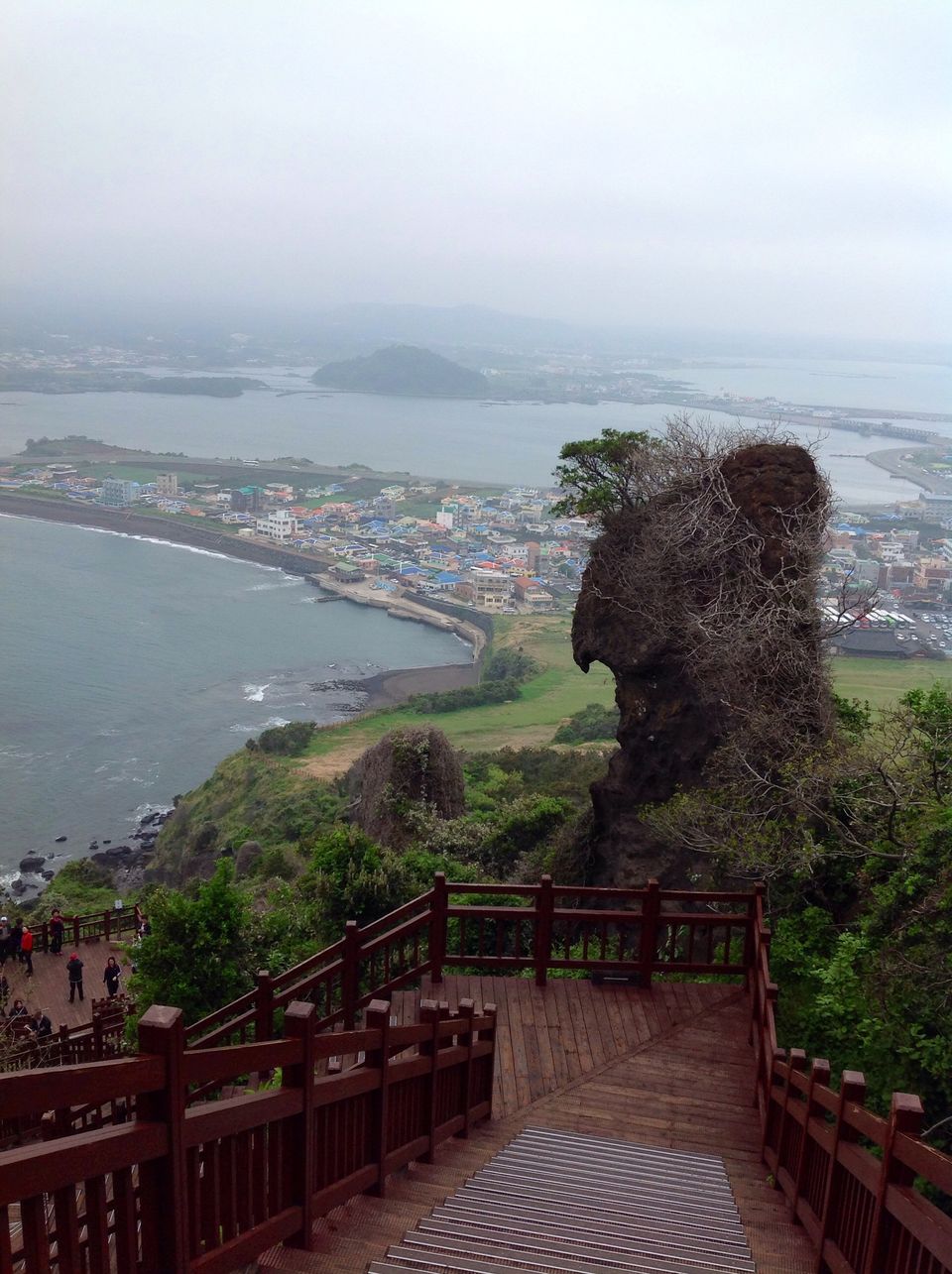



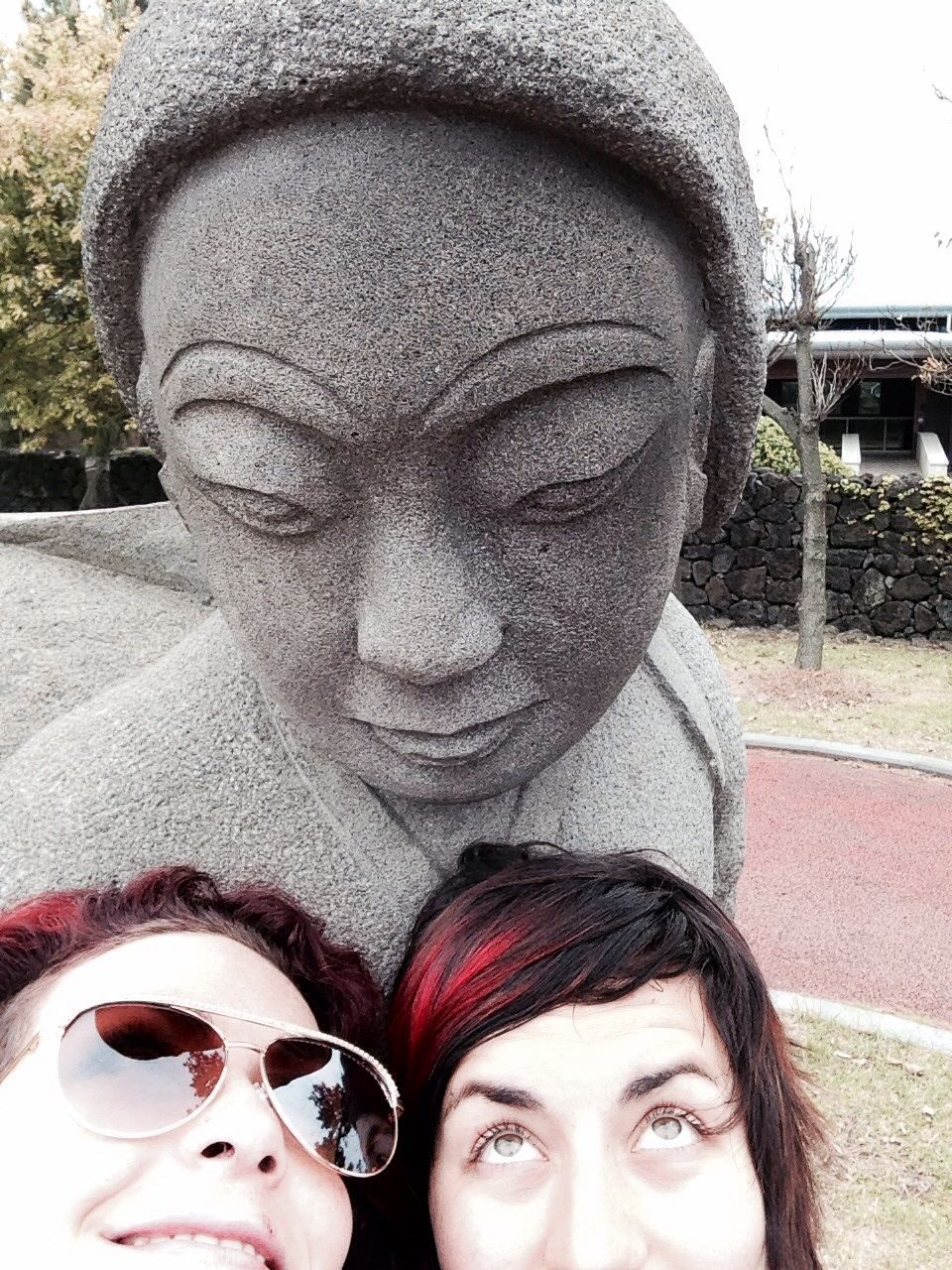
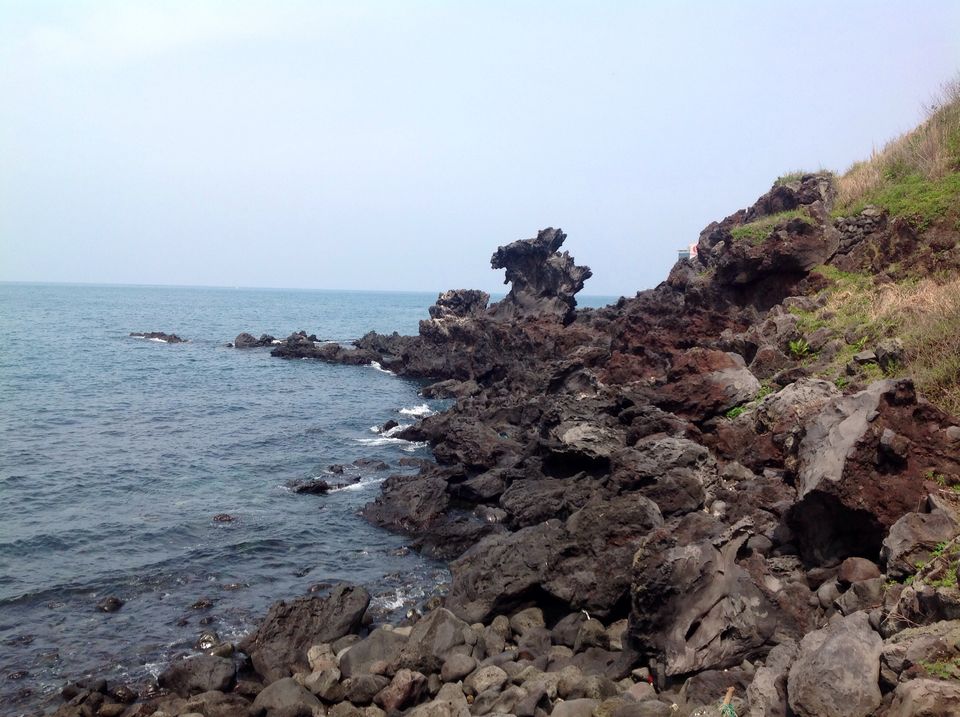
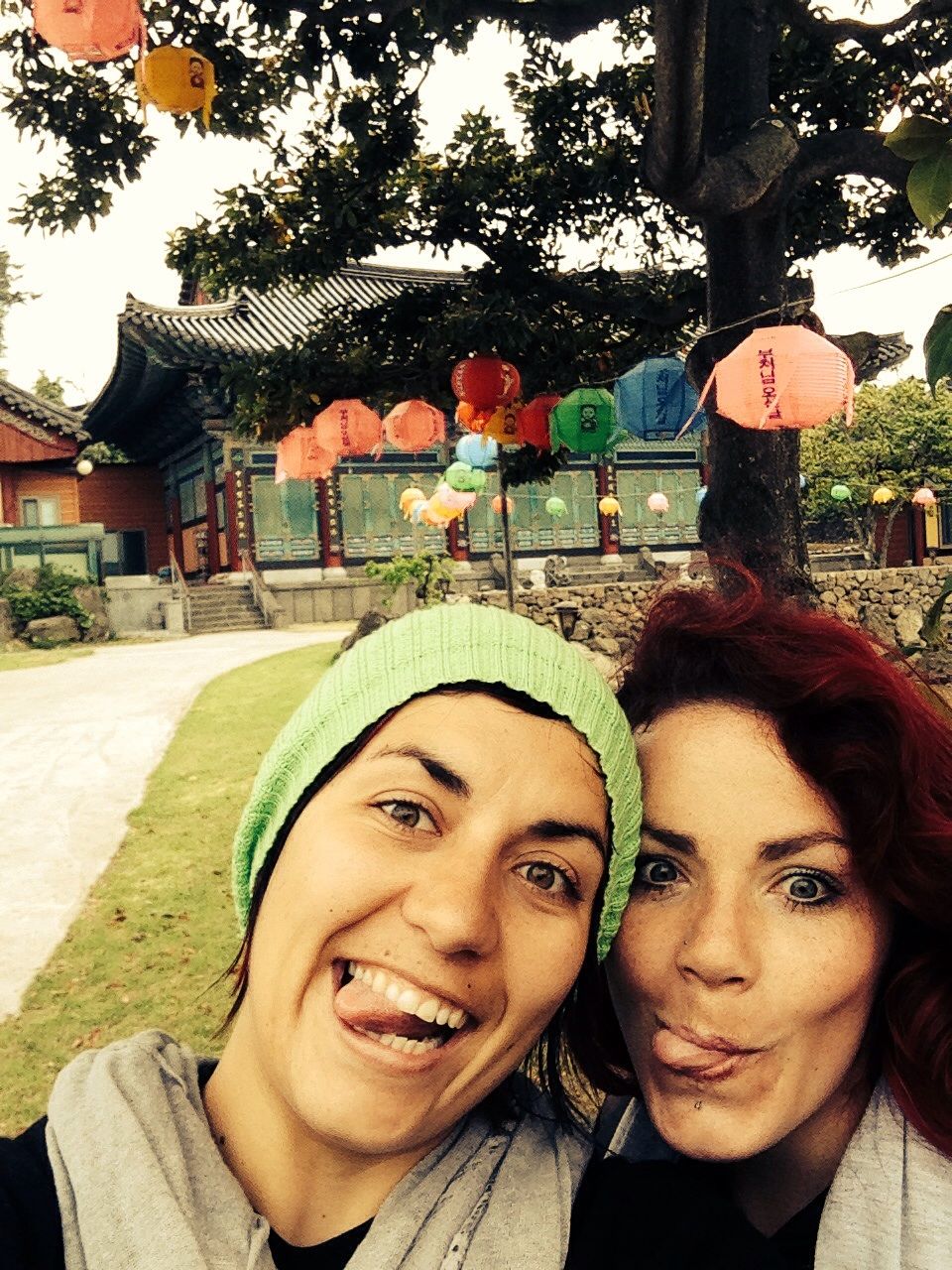
Considered the Hawaii of South Korea, the Island of Jeju-do was formed from an active Volcano, thus you can just imagine how fertile and green everything is. The best time to visit Jeju-do in our opinion is Spring, in the months of April or May, the most beautiful season in South Korea. You can either fly to Jeju-do제주도 from Seoul 서울 for about ₩150 000 Round Trip or take the farry, as we did. We took a bus down from Seoul 서울 to Mokpo 목포 for ₩30 000 ($30) per person, one way and then took the ferry for a 4 and a half hour trip to Jeju-do 제주도 from Mokpo 목포 for ₩30 000 ($30) per person one way. We ended up in a room full of teenage girls which was very entertaining to say the least.
Jeju-do is so overloaded with things to do and to see, once you have a map of the island, it takes a while to plan and decide where to go first. Fortunately the public bus service is excellent and it’s very easy, affordable and comfortable to travel around the Island. The most convenient way to pay for your trips on the busses, are to purchase a bus card at any 7eleven, CU or G24 convenience store, and load it with money, you will also get discount when paying this way. Bus no.700 runs along the coast, this makes it very convenient as you can get to all major areas in this bus, the prices of trips vary from ₩1300 to ₩3300 ($1.3 to $3.3) per person, depending on the length of your trip. The bus driver will ask you for you destination, have your destination in Korean if possible, as many of the bus drivers can’t speak English. You can then take either an inter-city bus or a taxi to your destination, inter-city busses charges ₩1000 ($1), and taxi’s usually charges by a meter, be aware that you are considered a tourist if you aren’t Korean, thus some of the taxi drivers will try and take advantage of this, don’t accept an amount before hand, be persistent for the driver to start the meter.
We stayed at The Forest Hostel and Guesthouse (1331-1, Ildo 1(il)-dong, Jeju-si, Jeju-do+82 64-722-4147), which we will gladly give the stamp of approval!! This is the most comfortable, clean, convenient, affordable, friendliest and accommodating accommodation in the whole of South Korea during our month long visit to this Country. We are raving about this Hostel because for the price per night, ranging from ₩15 0000 – ₩19000 ($15 – $19) for a bed in a dormitory, it is by far the best value we have received thus far. Included in the price per night, is great Wifi, a simple breakfast consisting of toast and jam, an Entertainment area in the basement with a big screen T.V, couches and a kitchen and to top it off, your own clean linen. And it’s hard to miss with the owner – Danny’s amazing creativity in printed on the outside. The hostel is also 50m from the famous Black Pork street, where we had succulent Black Pork Sangyeopsal (Korean BBQ) 삼겹살.

We decided to do a short trip the afternoon we arrived from Jeju-si to Samyang-dong 삼양 with bus no.100 to the bus terminal, and then got onto bus no.700 to the Samyang Black Sand Beach 삼양 해수욕장 and there after visited Jeju Folk Museum 제주민속박물관, which is up the road from the beach. We had our first taste of Jeju-do’s rich ocean life, when indulging into a hot bowl of Spicy Angel fish stew – Agwitang. That evening we visited a market called Dongmun Market Place, which is a big market, with loads of fresh vegetables, fruits, meat, fish and fermented side dishes.

The next day we took bus no.700 to visit Manjanggul Lava Tube 만장굴 a UNESCO World Natural Heritage in Gimnyeong-ri. Manjanggul Lava Tube 만장굴 is the largest cave and the only one that is open to the public. We were really amazed by this Lava Tube, the Lava Flow lines in particular amazed us, to imagine that we would have been totally covered by Lava left us in awe. Maze Park is also 1.7 km from the Manjanggul Lava Tube 만장굴 we walked there, well we basically walked everywhere under 10 km. The Maze Park has an entrance fee of ₩3300 ($3.3).
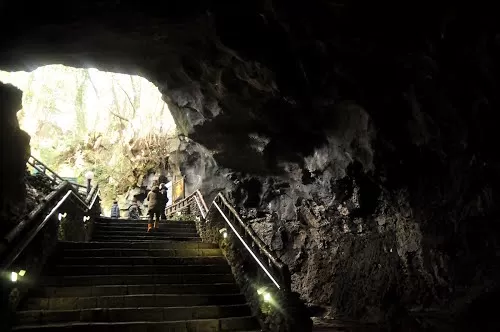
There after we took the no.700 bus to Heonyeo Museum 해녀박물관(Mothers in the Ocean) and the Anti Japenese Monument of Jeju Woman Divers, which is a celebration of the woman of Heonyeo. The ticket prices for entrance at the Heonyeo Museum was ₩1100 ($1.1), and it was money well spent! You get a detailed insight into the lives, workplace, equipment and children of the Heonyeo woman.

We then decided to be able to hike up Seongsan Ilchuldong Peak 성산일출봉 early the next morning, to stay at a Motel in Seongsan 성산 where we paid ₩30 000 ($30) for a room for the night. Seongsan Ilchulbong Peak 성산일출봉 also called ‘Sunrise Peak’, is an archetypal tuff cone formed by hydro volcanic eruptions upon a shallow seabed about 5 thousand years ago and also a UNESCO World Natural Heritage site. We decided to walk from the Motel to the Seongsan Ilchulbong Peak 성산일출봉 and found a public Reflexology area, which was fun and very painful at the same time. Hiking the Peak was just breath taking, the scenery offers spectacular views from every point on the hiking path. It’s an easy hike up the Peak and so rewarding when you reach the top. At the bottom of Seongsan Ilchulbong Peak, we had a stroll around Dong Am Sa Temple, where we saw a Buddha statue with babies pinching his nipples

We got back onto bus no.700 for a 2 and a half hour ride to Jungmun-dong where we slept in a Korean style room at Green Pension for ₩50000 ($50) a bit over our budget but this is considered cheap for this area but the Green Pension was walking distance to Chocolate Land, Teddy Bear Museum 테디베어박물관, Ripley’s Believe It or Not! Museum 믿거나 말거나 박물관 and Cheonjeyeon Waterfalls 천제연폭포. But we would rather suggest you to stay just outside this area as accommodation will a lot cheaper.
Ripley’s Believe It or Not! Museum 믿거나 말거나 박물관), has an entrance fee of ₩8000 ($8) per person, this Museum was a great showcase of Ripley’s discoveries mainly through out Asia. Around every corner we were amazed by a newly learned fact or exhibition of amazing people.

Cheonjeyeon Waterfalls 천제연폭포 has an entrance fee of ₩2000 ($2) per person. Cheonjeyeon Waterfalls is situated in a protected park, the park has 3 waterfalls and Seonim Bridge 선임교, what was truly spectacular about these falls, where the beautiful blue color of the water at the bottom of the falls.
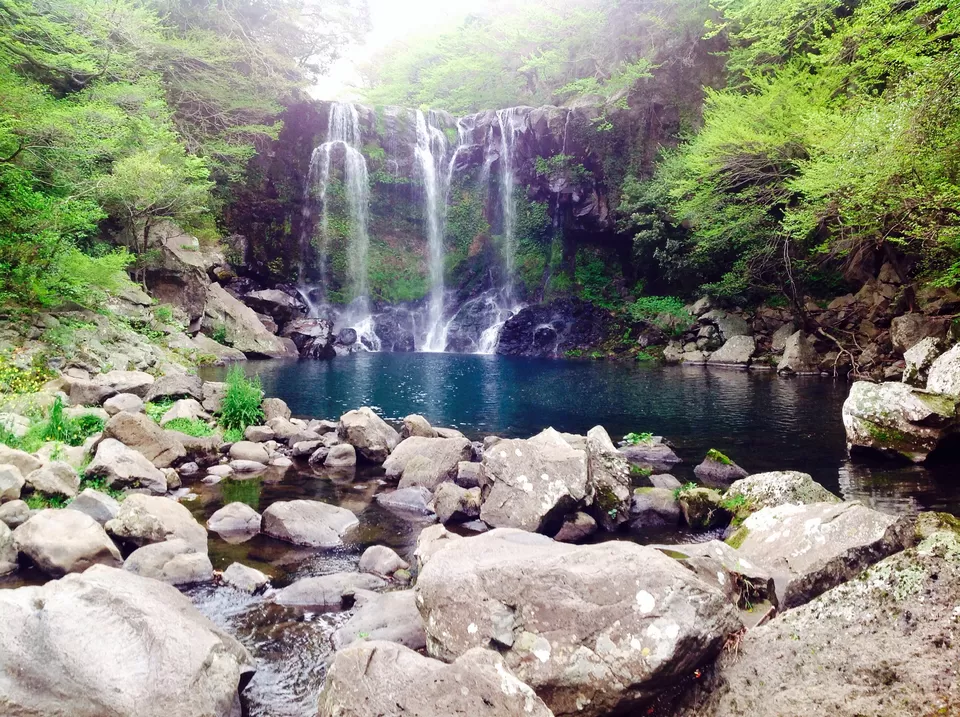
Hallasan Mountain 한라산- Hallasan Mountain, is South Korea’s highest mountain reaching 1,950m and is also considered a representation of Jeju Island. Hallasan Mountain한라산 is also one of the new 7 Natural Wonders of the World. There are 5 trails but only 3 reach the summit – Seongpanak Trail 9.6km, Eorimok Trail 6.8km, Eoseungsaengak Trail 1.3km, Yeongsil Trail 5.8km and Gwaneumsa Trail 8.7km. We took the no.100 bus to the Jeju Bus Terminal and then took the bus no.780 to the entrance of the Seongpanak Trail. Entrance was free. The hike up Seongpanak Trail has 3 stages, Grade A (Difficult), Grade B (Normal) and Grade C (Easy). What’s great about this Trail, is the fact that all difficulty levels are available, if you are a rookie hiker, like us, at the start of the Grade B Trail, you have the opportunity to seek left to Hallasan’s Crater, with an observation point, which totals to a 13km hike. We do suggest that you go with proper hiking shoes, as the route has a lot of rocks that form the path, and the path runs through beautiful scenery.
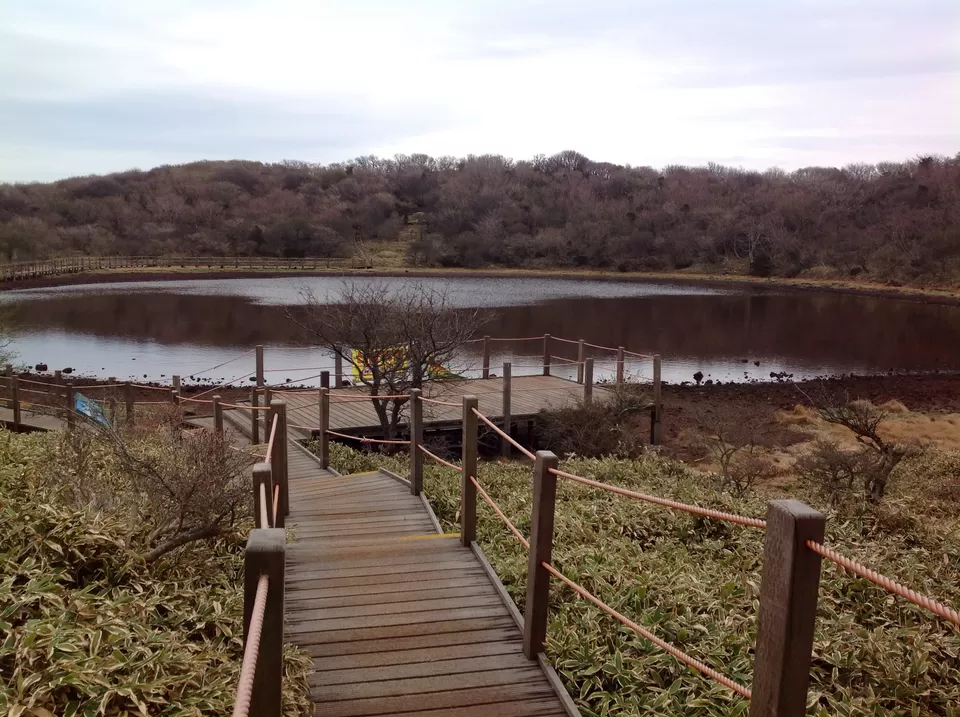
Walking to Yongduam Rock (Dragon Head Rock) 용두암 we discovered a Confucion Shrine -Jeju Hyanggyo 제주향교 – which has the purpose of educating the local people, while we were there, students were busy studying. As well as on our way home we found a Buddhist Temple, which name we could find.Yongduam Rock (Dragon Head Rock) 용두암 – there are plenty of other stories of how it came to be. One legend has it that a dragon stealing precious jade from Mt. Hallasan was shot down by an arrow from the mountain deity. When he fell down on Yongduam, his body immediately sank into the ocean and his head rapidly froze looking at the sky. Another legend has it that a white horse, who dreamed of being a dragon and ascending to the sky, came to be caught by a soldier and froze into the rock.


